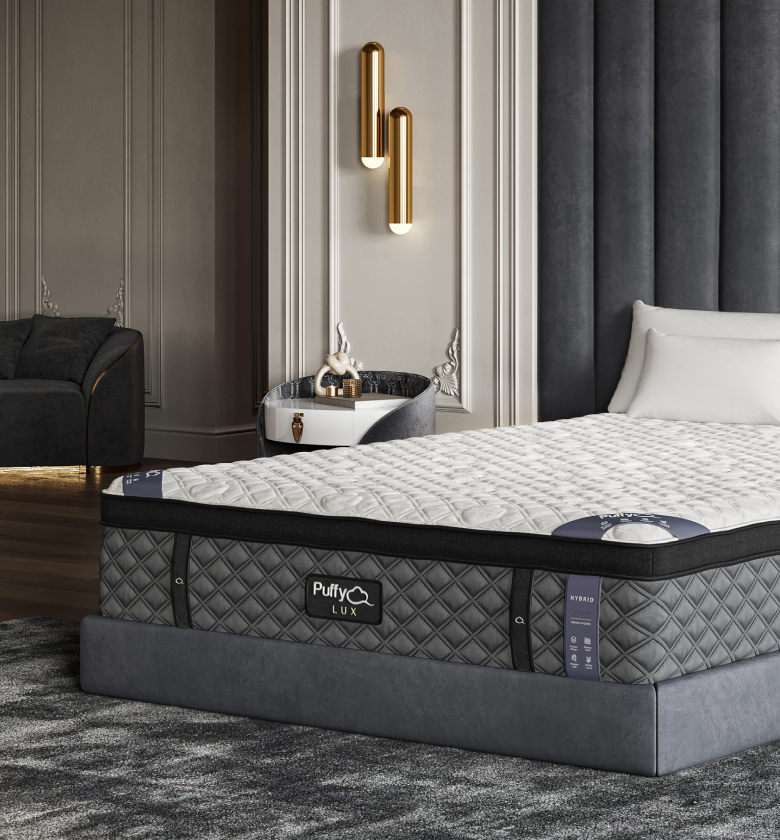Everyone seems to have a go-to “natural” remedy for life’s many inconveniences, and when it comes to bed bugs, tea tree oil is often that choice. It smells great and has a plethora of health benefits, but can it be the silver bullet for your bed bug problem? In simple terms, not quite. In this blog, we dissect the ins and outs of using tea tree oil against these persistent pests.
Will Tea Tree Oil Kill Bed Bugs?
The quick answer is both yes and no. Allow us to elaborate:
- Instant Kill: No, tea tree oil won’t instantly kill bed bugs.
- Long-Term Impact: Limited, as it requires persistent and ample application.
- Selective Effectiveness: May work on younger bed bugs but less effective on mature ones.
If you’re interested in more reliable ways to keep your sleeping environment bug-free, consider investing in a Puffy Lux Mattress. Its hypoallergenic cover can offer a more consistent line of defense against bed bugs.
How Does Tea Tree Oil Kill Bed Bugs?
Tea tree oil contains compounds like terpinen-4-ol that are toxic to bed bugs. However:
- Contact Requirement: You must make direct contact with the bugs.
- Limited Penetration: Does not affect bed bug eggs or those hidden in cracks.
How to Use Tea Tree Oil to Kill Bed Bugs
While the efficacy of tea tree oil in killing bed bugs may be limited, if you still wish to proceed with this natural remedy, it’s essential to do so with utmost caution and thoroughness. Applying tea tree oil isn’t just about spraying some diluted solution; there’s a method to it.
In this extended section, we’ll provide a more comprehensive guide on how to use tea tree oil effectively against bed bugs, factoring in all necessary precautions and best practices.
Step 1: Purchase High-Quality Tea Tree Oil
The first step involves acquiring a 100% pure, high-quality tea tree oil. The effectiveness of the remedy is directly proportional to the quality of the oil.
Step 2: Safety Measures
Before you go any further, remember that tea tree oil is toxic when ingested and can cause skin irritation. Make sure to keep pets and children away during the application process. Always wear gloves to protect your skin.
Step 3: Dilution Is Key
Pure tea tree oil can be quite potent and may harm the skin and surfaces it comes into contact with. Mix about 20 drops of tea tree oil with 200 ml of water in a spray bottle. Shake well to combine.
Step 4: Preliminary Testing
Before you go all out, spray the diluted solution on a small, inconspicuous area and observe for any discoloration or adverse effects. If all seems well, proceed to the next step.
Step 5: Targeted Application
Spray the diluted tea tree oil solution liberally where you suspect bed bug activity. These spots can include the mattress, bed frame, cracks, and crevices in the walls, and around the bedroom furniture. Be meticulous and thorough in your application.
Step 6: Regular Re-application
The effect of tea tree oil is temporary. As such, you’ll need to reapply the solution frequently - preferably every day for at least a week - to ensure that any remaining bed bugs come into contact with the oil.
Step 7: Monitor and Evaluate
After the week-long treatment, evaluate the situation. If you still notice bed bug activity, it may be time to consider stronger alternatives.
Does Tea Tree Oil Repel Bed Bugs?
There’s a fine line between killing and repelling, and tea tree oil seems to blur it.
- Initial Repellency: Bed bugs may avoid areas sprayed with tea tree oil.
- Limited Duration: The repellency is temporary and requires frequent application.
The Science Behind the Repellency
Several studies have explored this, often with inconclusive results. However, what’s certain is that tea tree oil’s natural components can act as a repellent for a short period.
Check out Puffy mattress reviews from real customers and see how we compare with other brands.
Are There Risks in Using Tea Tree Oil?
Absolutely:
- Toxicity: Especially to pets and children.
- Skin Irritation: Potential allergic reactions.
Safe Alternatives to Tea Tree Oil
- Lavender Oil: Also repels but less toxic.
- Neem Oil: Effective but smells less pleasant.
Comparing Natural Bed Bug Remedies
| Treatment | Effectiveness | Risk Level | Longevity |
| Tea Tree Oil | Moderate | High | Low |
| Lavender Oil | Low | Low | Low |
| Neem Oil | High | Moderate | Moderate |
Expert Opinions on Tea Tree Oil and Bed Bugs
Several entomologists and natural remedy experts have weighed in:
- Limited Efficacy: Generally not recommended for severe infestations.
- Better Alternatives: Commercial pesticides or professional help are often more effective.
Conclusion
While tea tree oil might offer some benefits in combating bed bugs, it’s not a full-proof or long-term solution. The limitations far outweigh the pros, and there are safer and more effective alternatives available.
Use our store locator to find the closest furniture or mattress store near you and feel the cloudlike comfort of our Puffy Mattress in person.
Your best bet is to approach the issue comprehensively, taking into account the risks and the scope of the problem.

- Award-Winning Comfort
- Lifetime Warranty
- 101-Night Sleep Trial
- Free Shipping in 1 - 2 Days
- Assembled in USA












